Abandoned buildings scattered around the globe serve as mute witnesses to different eras.
They usually symbolise defunct political regimes and ideologies, companies that have gone bankrupt for various reasons, or government reforms and development vectors.
Reforms and development vectors. For certain categories of people, abandoned and destroyed by time and vandals, buildings and entire complexes are of no less interest than those that are currently in use. This blog provides an overview of a number of sites whose necessity and functionality have been mercilessly trampled on over the years.
Nicosia Airport, Cyprus
The abandoned field serves as a reminder to all Cypriots and concerned citizens of other countries of the tragic events that took place on the island 50 years ago. Nicosia Airport was the main air port of Cyprus until the Turkish invasion, when a newly built airfield at Larnaca took over. The Nicosia airbase was built in the early 1930s for the British Royal Air Force and was used by the US Air Force to bomb Romania during the Second World War. Passenger flights began in 1948 and a terminal was built to handle up to 16 flights an hour until July 1974.
At the beginning of the conflict, the airport was bombed by the Turks and was the scene of heavy fighting, and after a short time it was permanently closed. A year later, under international mediation, negotiations were held for the joint management and use of the facility by Cyprus and the illegally occupied area, but these were unsuccessful. The last technical flight from Nicosia took place in 1977, and the derelict aircraft remain there today. As a goodwill gesture, the UN offered to open the airfield under its control, but neither side took the offer seriously. The site is currently used as the headquarters of the UN peacekeeping force in Cyprus. The airport, located in the buffer zone, took its place as part of the Nonuments project, which is part of the European Union's Creative Europe programme.
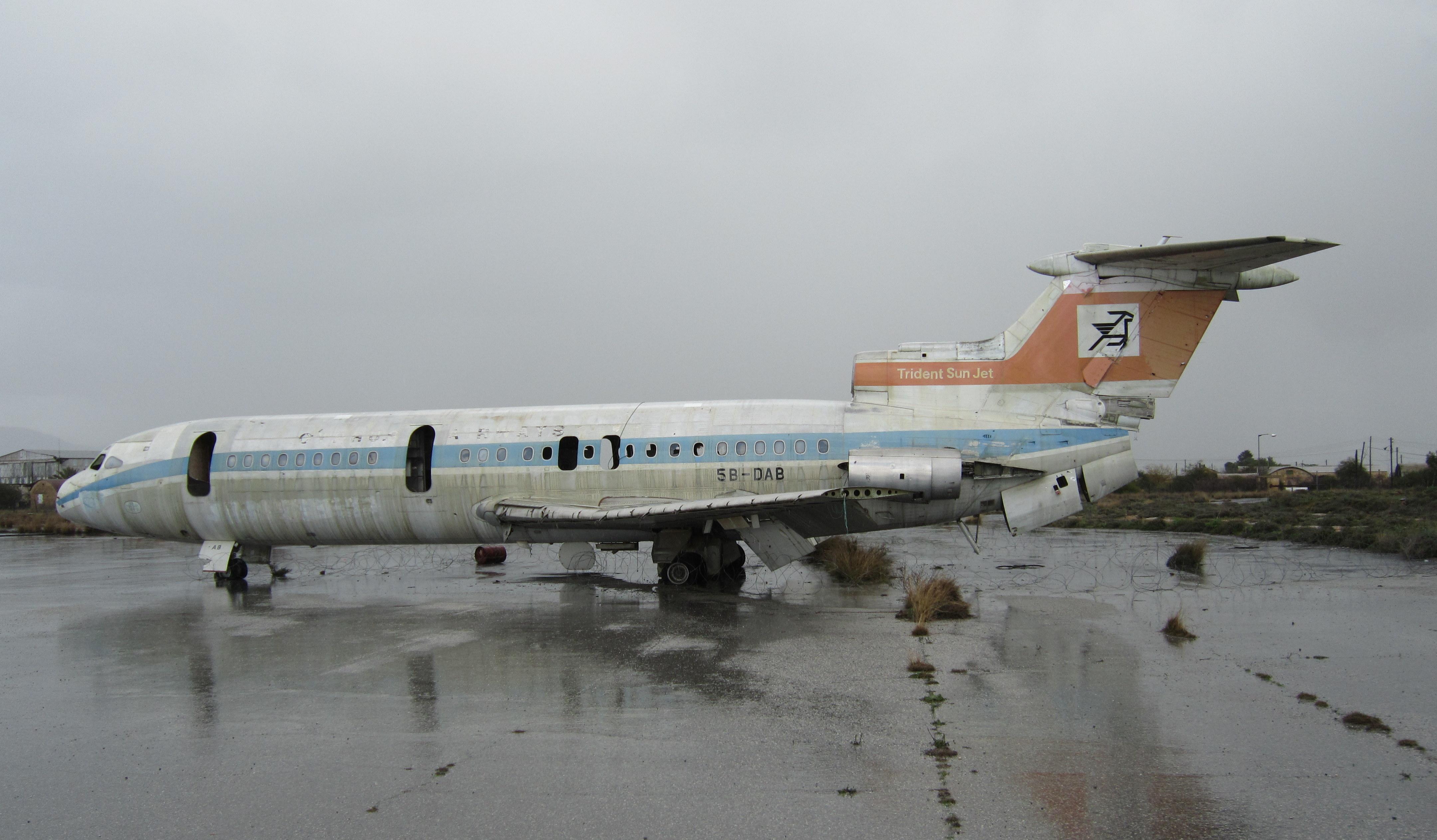
Ryugyong Hotel, North Korea
The Ryugyong Hotel, which has never hosted a single guest, is located in the centre of the North Korean capital. It is a 105-storey building in the shape of a mirror pyramid, 330 metres high and the tallest in North Korea. The three wings of the structure, combined with the spire pointing skywards, resemble a space rocket. Such architecture has served as a symbol of power, durability and strength for thousands of years, and the Juche Pyramid is a vivid reflection of these stable categories. The hotel's name comes from Pyongyang's old name, Rügen.
Construction began in 1987, but was interrupted by the economic crisis that followed the collapse of the USSR. After 10 years it was resumed with the help of Egyptian specialists, with completion scheduled for 2012 to coincide with the 100th anniversary of the birth of the country's leader and founder, Kim Il Sung. From an ideological point of view, it was an argument and a response to the project of what was then the tallest hotel in Singapore, built by a South Korean company. The DPRK government saw the Ryugyong Hotel as a way for foreign investors to enter the country and allowed casinos, nightclubs and 'Japanese salons' for adults to be built in it.
When construction was completed, world-famous hotel operator Kempinski announced it would take over management of the hotel, but reneged on its promise. This was due to international tensions, the country's isolation and the nuclear tests that frightened the West. The question of the need for such a large hotel in the most isolated country in the world is justified. Perhaps Ryugyong was conceived as a long-term investment to increase the flow of tourists. After all, there are plenty of interesting historical and architectural monuments in the DPRK, and Pyongyang itself can give many capitals a run for their money when it comes to clean streets, safety and public transport. A large screen on the facade, which appeared in 2018, has become a means of showing patriotic stories to the whole city.
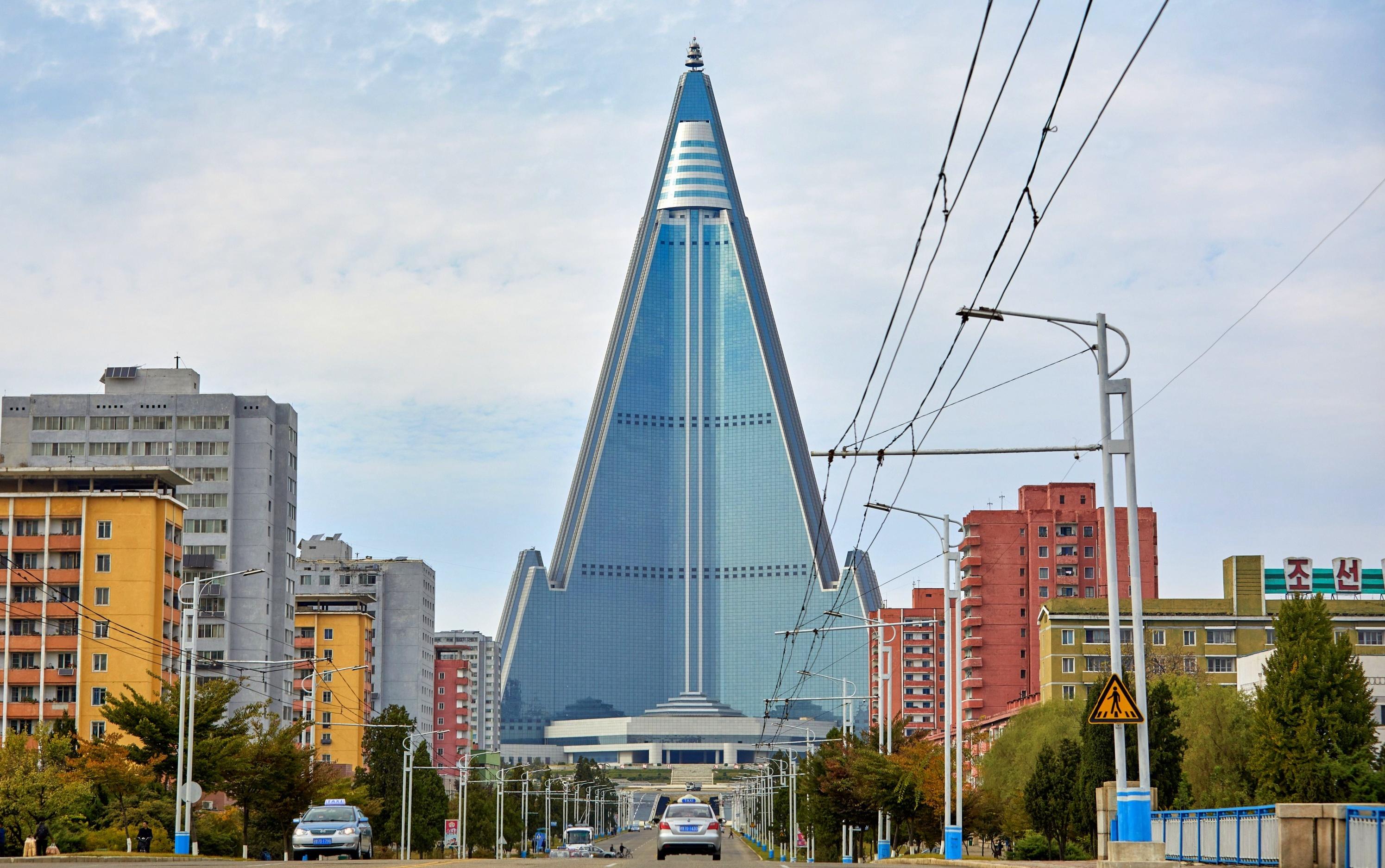
Haludovo Palace Hotel, Croatia
Located on the Croatian island of Krk, this abandoned resort hotel is named after the nearby beach. Built in 1971 on the picturesque Adriatic coast, the complex blends harmoniously into the natural landscape and covers a total area of 1500 m2. At the time, Haludovo Palace was considered the most luxurious resort not only in Yugoslavia, but also in the entire socialist camp. Here, rich guests enjoyed nature and the sea, gambled and, without false modesty, indulged in caviar, lobster and champagne. The hotel, built in the form of asymmetrical concrete structures, had swimming pools, saunas, a cinema and tennis courts.
Yugoslavia was a rather closed country at the time, but famous personalities such as Silvio Berlusconi, Muammar Gaddafi and Yasser Arafat enjoyed all its benefits. The investor in the complex, including the Penthouse Adriatic Club Casino, was Bob Guccione, founder of the world famous Penthouse magazine. He himself believed that the project would help create jobs and bring the West closer to Eastern Europe. The following year, however, the casino went bankrupt and closed. The hotel itself remained open until 1991, serving as a refugee shelter during the Yugoslav wars. At various times, celebrities and prominent political figures from all over the world have holidayed here. Today, the future of the resort is uncertain, and this 'monument to Yugoslav-American friendship' is completely derelict and abandoned.
Haludovo Palace Hotel on the map
Venues for the 2004 Olympic Games in Athens, Greece
Looking at the abandoned venues of the 2004 Summer Olympic Games in Athens, anyone who is not indifferent to sport will be overwhelmed with mixed feelings. On the one hand, Greece is the birthplace of the Olympic Movement and it is here that the Olympic flame is lit on Mount Olympus and the torch relay sets off to the site of the forthcoming Games. And Hellas itself has given the world many outstanding athletes. On the other hand, the lion's share of the sports grounds have fallen into disrepair or have been demolished altogether, reflecting the state's policy towards sport, proving the failure to capitalise on the Games and perhaps confirming the wrong choice of venue by the International Olympic Committee (IOC). Unfortunately, such images are not unique to Greece, and the politicisation of the Olympic Games and other major international competitions has become increasingly evident in recent years.
Well, the country spent more than 8.5 billion euros on the Olympics. The Panathinaikos Stadium, built from the same marble as the famous Acropolis, which remains the finish line of the annual Athens Marathon, was a source of particular pride for the Greeks. But most local analysts and officials believe that the Olympics have drained the country's budget, despite international aid. The IOC has vehemently disputed this view, arguing that it sees no link between the economic crisis and the Olympic and Paralympic Games. According to Spyros Kapralos, head of the Greek Olympic Committee, "the lessons learned from Athens are that in today's world, host cities should not build permanent facilities that will not be used later". At present, despite the objective difficulties, the country's economy is growing steadily and modern residential complexes are taking the place of abandoned stadiums. P.S. As of 2020, the IOC has changed the process for submitting and evaluating bids to host the Olympic Games.
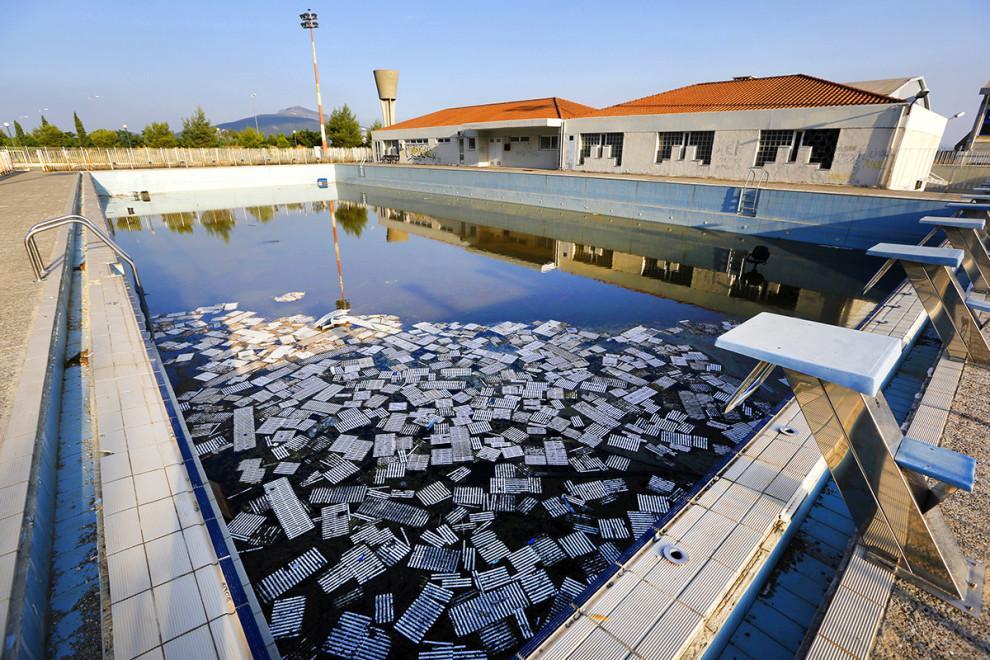
Hashima Island, Japan
On this small island, 15 kilometres from the infamous Japanese city of Nagasaki, coal mining was in full swing in an underwater mine more than 50 years ago. This piece of land is also known as Gankajima, which means 'battleship island' because of the island's resemblance to this warship. It is hard to imagine now that this islet in the Sea of Japan was once one of the most densely populated places on the planet (the maximum number of inhabitants of the island - 5260 people). Over time, housing estates, shops, a hospital, a school, a sports complex and a community centre were built to provide a comfortable life for the miners and workers.
Hashima was a profitable coal mine from 1887 to 1974. Then the coal ran out, the mine closed permanently and the population left the island in a hurry. Interest in the site as a tourist attraction was revived in the early 2000s, and from 2009 local companies began organising regular tours of the site. In 2015, Hashima was designated a UNESCO World Heritage Site and remains a symbol of Japan's rapid industrialisation. The island regularly appears in a number of feature films, the most famous of which is '007. Skyfall' coordinates from the famous Bond films.
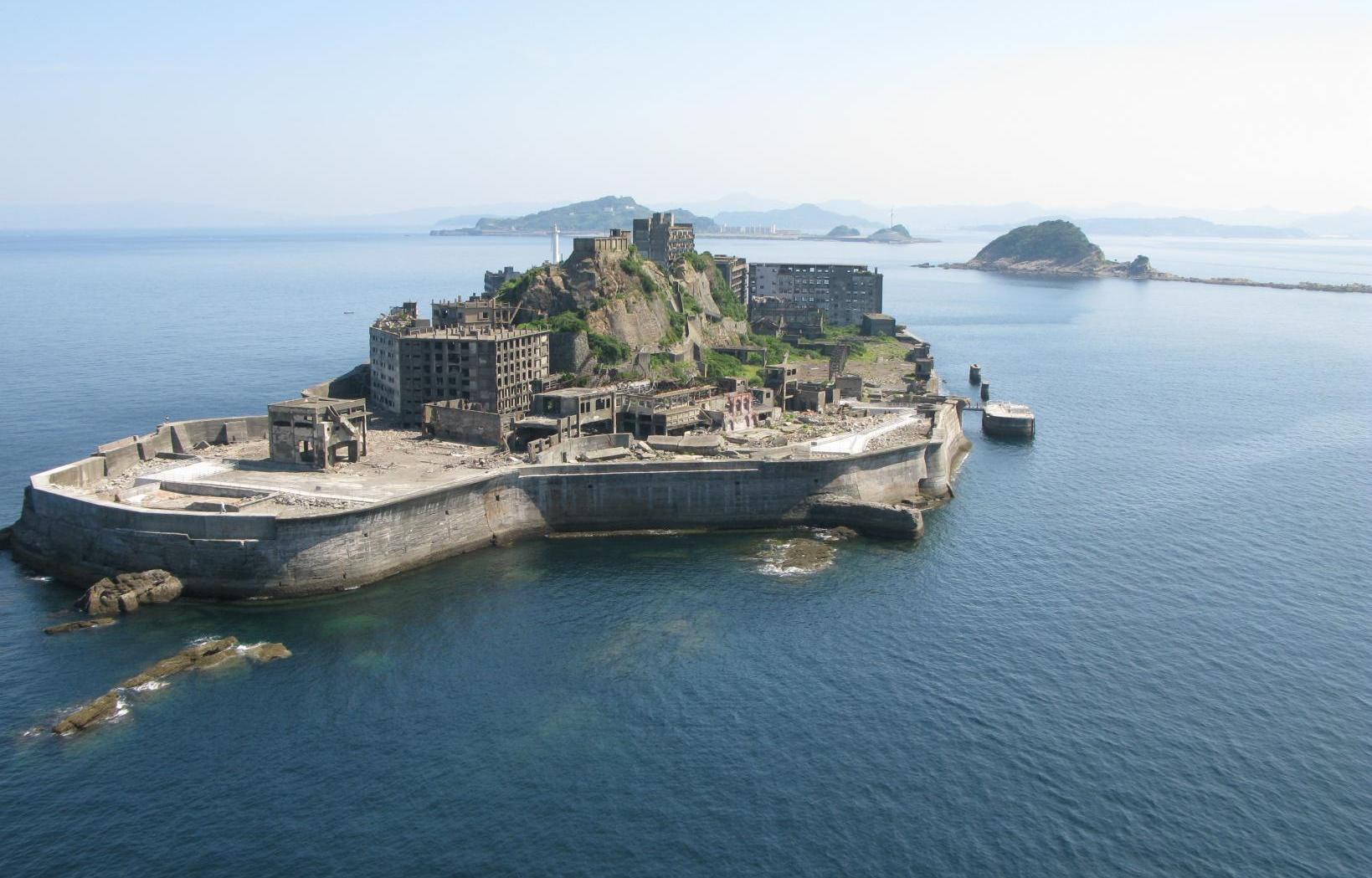
Buzludzha, Bulgaria
The House Monument of the Bulgarian Communist Party (BKP) was opened in 1981 on Buzludzha Mountain in central Bulgaria. It should be noted that during the period of BKP rule, this peak was considered a shrine of the local communists, and the site for the monument was not chosen by chance: officially, the mountain was named in honour of the Bulgarian national hero Hadji Dimitra, who was killed by the Turks during the war. The Bulgarian Workers' Social Democratic Party was founded here in 1891. The monument, designed by the architect Georgi Stoilov, took almost 6 years to build and was financed by voluntary donations from ordinary Bulgarians. The result is a monument of glass, concrete and steel that resembles a giant flying saucer. The 70 metre high tower is decorated with ruby glass stars, with the help of Soviet specialists. In the centre of the dome is the sickle and hammer emblem, and inside the building is lined with detailed mosaics depicting workers, leaders of the BKP and the USSR, and historical events in the country. The building was used for party celebrations, the initiation of young people into the Pioneers and Komsomol, and as a museum.
In 1989, after the change of power, the monument was abandoned, and in the following decades it was ruthlessly plundered by looters. Since then, the ruby stars have only shone once, with the help of powerful spotlights installed by the Socialist Youth Organisation. Every year, the Socialist Party celebrates its anniversaries on this sacred mountain, and members and sympathisers also hold celebrations and meetings here. In 2016, the inscription "Never forget your past" appeared above the entrance. Its presence is probably due to the fact that the monument can be recognised as an object of cultural and architectural heritage of the country and is subject to restoration. It is planned to turn the 'flying saucer' into a museum of the history of the Bulgarian people from ancient times to the present day.
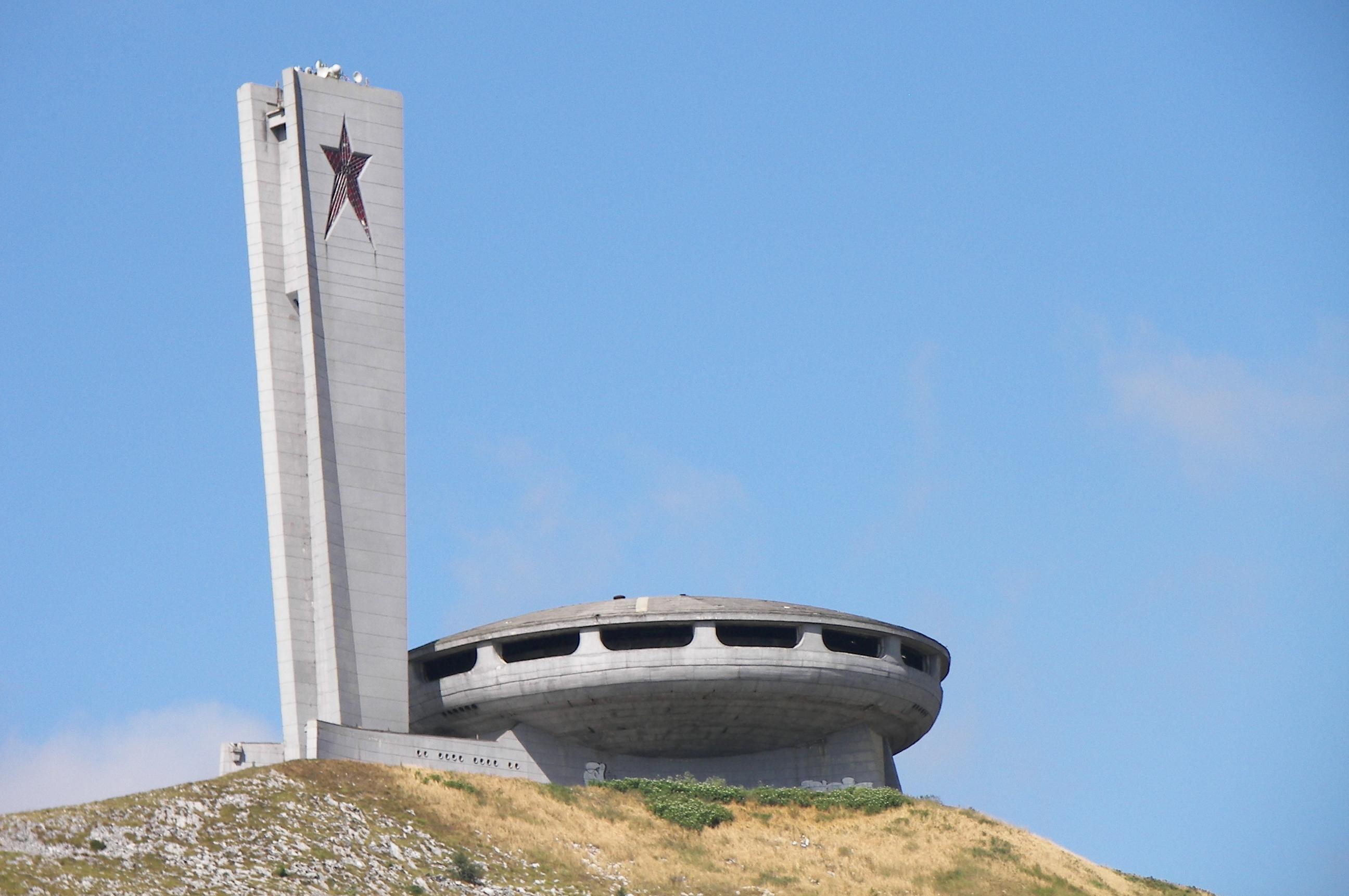
Lapalice Castle, Poland
This abandoned and desolate looking castle is the unfulfilled dream of Polish artist and architect Piotr Kazimierczak, who dreamed of building such a property since his childhood. He was also the owner of a furniture factory, which at a certain point began to flourish and gave him the hope and opportunity to realise his childhood dream. Kazimierczak took the first step and obtained permission to build a 1,000m2 house on a very small plot of land. In 1984, in the small, inconspicuous village of Lapalice in northern Poland, the construction of the magnificent 'underbuilding' began, with the sculptor himself striving to create an ideal building for himself. It should be noted that there was a lot of symbolism in the architecture of the new building: the total number of windows is 365, which corresponds to the number of days in a year. The number of rooms and towers was 52 and 12 respectively, corresponding to the number of weeks and months. The presence of towers was also linked to the number of apostles in the Holy Bible.
The castle was to be a true marvel in stone, at least in Poland: a shady park, a ballroom, an indoor swimming pool, courtyards and observation decks on the towers were planned. Soon after construction began, the project came to a standstill: not only had the owner run out of money, but he had also extended the construction of the huge castle onto land for which he did not have permission. He was forced to abandon his dream, and today the castle is a pitiful sight: empty windows staring sadly out at the world, the walls covered in tasteless graffiti. However, Piotr Kazimierczak still hopes to complete his creation because, 40 years after construction began, the condition of the building allows him to continue what he started.
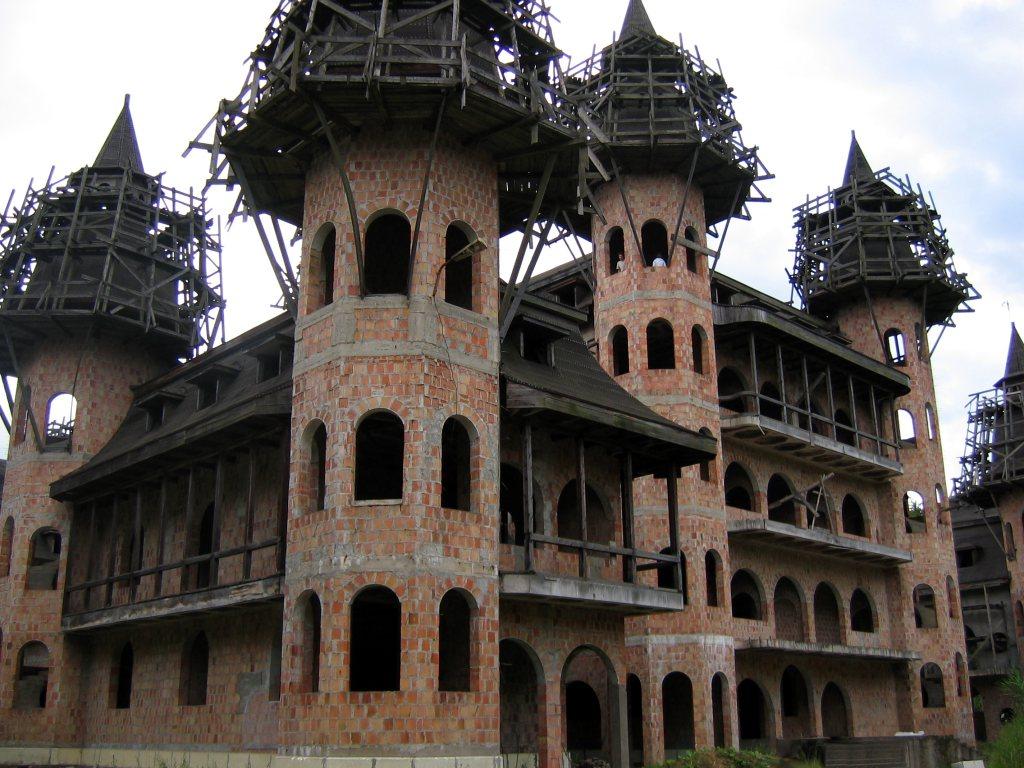
Alcatraz Federal Penitentiary, USA
Alcatraz Federal Penitentiary, well known outside the USA, is built on the island of the same name, 1.5 nautical miles from San Francisco. Originally designed as a naval fort, the purpose of the fortified complex changed over time and in 1861 the institution began to receive its first convicts. A few decades later, the island came under the jurisdiction of the Navy for a time, but in 1933 it was returned to the Department of Justice. Since then, Alcatraz has served as a maximum security federal prison, where the most notorious criminals have served their sentences. The most famous of them: Prohibition-era Chicago gangster Al Capone, bootlegger and bank robber George Kelly, and serial killer Robert Stroud, who served 54 years. However, 'behind bars' he managed to become an accomplished ornithologist. Although the prison could hold 450 inmates at a time in cells measuring 3 metres by 1.5 metres, for security reasons the number could not exceed 250.
Escape attempts were rare on Alcatraz. The largest and most violent took place in 1946, when 36 prisoners neutralised the guards, took possession of weapons and opened fire indiscriminately. Order was restored when marines arrived on the island. At the same time, 23 prisoners were killed, the rest managed to escape from the island surrounded by the cold ocean in the presence of sharks, but their fate is unknown. This event was the inspiration for the film 'Escape from Alcatraz', starring the American actor and director Clint Eastwood. No less famous is the film The Rock, starring Sir Sean Connery, Ed Harris and Nicolas Cage. Eventually, however, the cost of delivering water, other food and supplies and the increased risk of transporting prisoners led to the closure of the prison in March 1963. Five years later, Alcatraz became part of the Golden Gate National Recreation Area. Today, the island remains one of San Francisco's most popular tourist destinations, with a museum and the opportunity to experience the prison atmosphere for a few minutes.
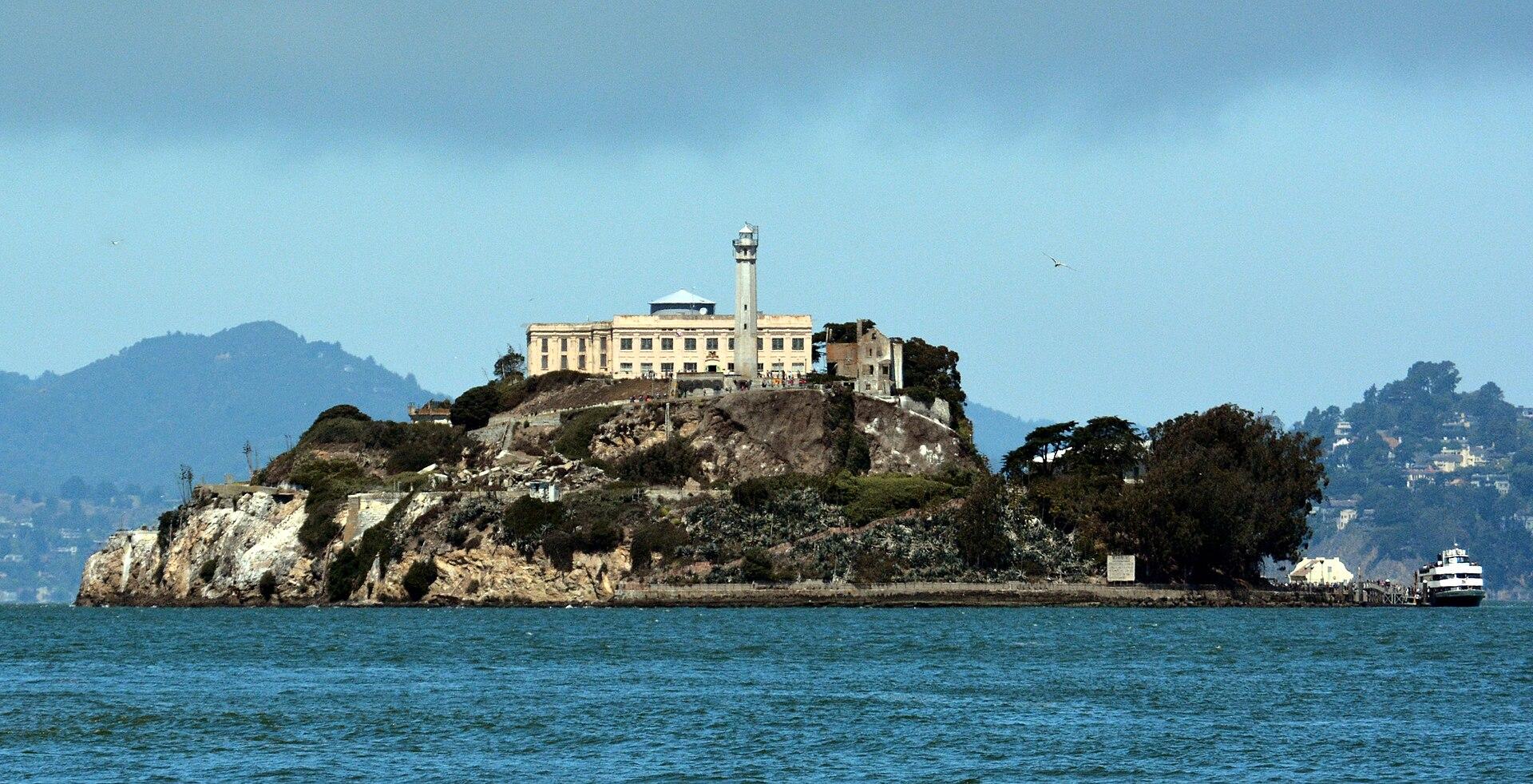
Read also:

